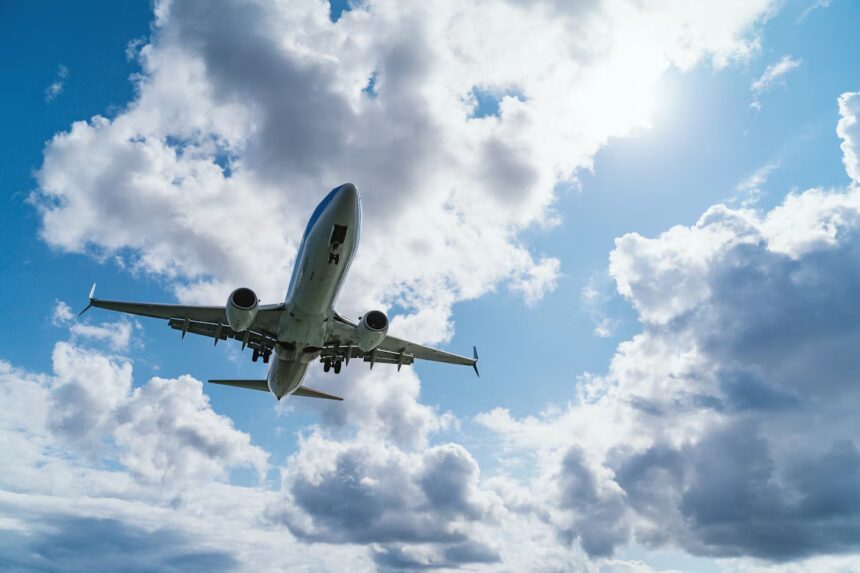Resource Watch, an environmental data visualisation platform, has reported that sea levels are rising globally by 3.3 millimetres per year, increasing the risk of coastal flooding and affecting any and all costal airports worldwide. Flooding pose a risk of runway closures and flight delays or cancellations, which may ultimately lead to airport closures.

Aviation Industry: At Risk of Rising Sea Levels
According to a peer reviewed study, which analysed over 1,200 coastal airports, 269 of those are at high risk of permanent flooding, (Yesudian & Dawson, 2021). This study estimated that 100 airports would be below sea level at an average global temperature rise of 2 °C.
Many airports have chosen low lying costal grounds as these grounds are ideal for long runways. However, this advantage now poses a risk of permanent flooding and damage to airport infrastructure during high tides or storms. Resource Watch predicts that extreme weather events will become more frequent and severe, as evident by the 40% increase in heavy rainfall and flooding in the U.S. since the 1960s.
Findings from the study by Yesudian & Dawson (2021) and Resource Watch align with reports from the International Civil Aviation Organization (ICAO) 2022, Airports Council International (ACI), and the World Economic Forum’s Global Risks Report 2020, all of which confirm that rising sea levels pose a highly probable risk to coastal airports and its infrastructure.

Coastal Airports: At Risk of Rising Sea Levels
Asia’s aviation sector is particularly vulnerable, with Airports like Bangkok and Shanghai Pudong, both located on low-lying coastal land and among the most exposed globally to storm surges, (Yesudian & Dawson, 2021). Similarly, Kansai International Airport (Japan) and small island airstrips in Tuvalu (islands midway between Hawaii and Australia) face sea level threats, which could cause them to be permanently submerged.
Additionally, Amsterdam Schiphol and Rotterdam The Hague airports are located at sea level and rely on flood defenses, which could be overwhelmed by significant sea level rise.
Overall, 12 major airports in North America are at severe risk from approximately 1 meter of sea level rise, according to a global assessment of aviation infrastructure by Yesudian and Dawson (2021).
In line with the study’s localised risk assessments, more than 50% of airports serving the San Francisco Bay Area are expected to be underwater during storm events by 2040.

What this Means for Airlines and Travellers
The vulnerability of coastal airports was evident in 2012 during Hurricane Sandy, when LaGuardia Airport in New York City was forced to shut down after its runways were submerged under several feet of water.
Major news outlets (Bloomberg and ITV news) reported on this major flooding, with images of the runways resembling a lake, and the port authorities of New York and New Jersey suspending operations across the region’s major airports illustrating the scale of disruption a single storm event had caused.
Any future rise in sea levels could lead to widespread flight cancellations, longer journey times, and potentially higher ticket prices, as the cost of infrastructure projects would likely be passed on to airlines.

Aviation Adaptation: Mitigation and Solutions
Airlines and airports are already preparing for and responding to the challenges of climate change. San Francisco International Airport announced it was launching environmental assessments for a significant new infrastructure investment: a $587 million project, as detailed in its Environmental Impact Report produced by Environmental Science Associates (ESA, 2023), with plans to complete an eight-mile seawall by 2035.
Other measures, such as elevated runways and improved drainage systems, are becoming more common across U.S. airports in response to updated climate models and guidance from the Federal Aviation Administration.
Notably, while major airports have the resources to fund such infrastructure, smaller island airports may lack the financial capacity to implement flood defence systems, highlighting that fact that mitigation measures may not be viable for all airports.
Have you flown to a coastal airport before? What do you think about the mitigation and defence solutions undertaken by some airports?









